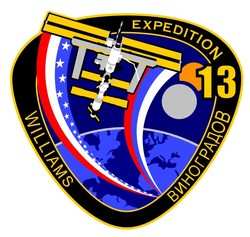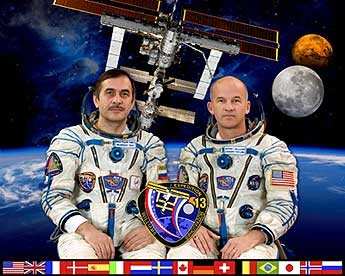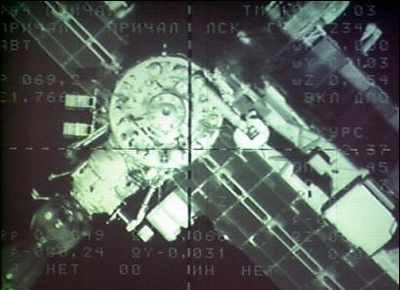 The International Space
Station crew wrapped up its week with post-spacewalk tasks and
began to turn their focus toward the arrival of a Progress supply
vehicle and preparations for Discovery’s upcoming shuttle
mission, STS-121.
The International Space
Station crew wrapped up its week with post-spacewalk tasks and
began to turn their focus toward the arrival of a Progress supply
vehicle and preparations for Discovery’s upcoming shuttle
mission, STS-121.
Commander Pavel Vinogradov and Flight Engineer Jeff Williams had
a busy weekend with closeout tasks and station configurations after
the spacewalk last week. They finished the cleanup and stowage of
the Orlan spacesuits and related tools.
The crewmembers enjoyed light duty days on Monday and Tuesday to
rest after the extended spacewalk and its follow up activities, but
resumed a normal work and sleep schedule Wednesday. Another
off-duty day for the crew is scheduled Monday.
The crew attempted to reactivate the Russian Elektron
oxygen-generating system this week following the replacement of its
external hydrogen vent valve during the June 1 spacewalk. After
several attempts, the Elektron began operating but failed about
seven hours later. Vinogradov checked the vent lines associated
with the refurbishment effort during the spacewalk and they
appeared to be clear and operating normally.

But another attempt to restart Elektron earlier today proved
unsuccessful, leading Russian specialists to believe that the
problem is due to a failed power unit. A spare was located by
Vinogradov and will be installed on Sunday for another attempt to
bring the system back on line. The crew has at least a week of
oxygen available in the cabin atmosphere before it would need to
use supplies out of the Progress 21 cargo ship tanks. The Elektron
problem has had no impact on station operations and ample alternate
supplies of oxygen are available.

This afternoon, the ISS Progress 21 thrusters were used to
reboost the station by a little less than one mile, placing the
complex at the correct altitude for the launch and docking of the
new ISS Progress 22 cargo vehicle. Progress 22 is scheduled to
launch June 24 from the Baikonur Cosmodrome in Kazakhstan, and will
dock to the station on June 26 at the Pirs Docking Compartment
port.
That docking port currently houses the older Progress 20
resupply ship, which will be jettisoned on June 19 to make way for
the new cargo vehicle.

Other work this week included some final spacewalk tool stowage
tasks and the reconfiguration of the station’s systems,
including the communications system in the Russian Zvezda Service
Module and the Pirs Docking Compartment airlock.
The crew conducted a successful communications test with the
Dryden Flight Research Center and White Sands Test Facility ground
sites and performed routine emergency fire drill training. They
also inspected portable breathing apparatus and fire
extinguishers.
Williams participated in two amateur radio sessions, the first
with the Salt Brook Elementary School in New Providence, N.J., and
a second with the Scarlett Middle School, a 2004 NASA Explorer
School in Ann Arbor, Mich. Both crewmembers participated in an
in-flight interview with the website team associated with the State
Department's Bureau of Educational and Cultural Affairs.
Williams who serves as the station’s science officer, ran
a session of two colloid experiments – InSpace (Investigating
the Structure of Paramagnetic Aggregates from Colloidal Emulsions)
and BCAT (Binary Colloidal Alloy Test). Vinogradov worked with two
Russian life science experiments – URAGAN, which is a ground
and space based system for predicting natural and manmade
disasters, and DIATOMEA, an ocean observations program.
 Airbus Racer Helicopter Demonstrator First Flight Part of Clean Sky 2 Initiative
Airbus Racer Helicopter Demonstrator First Flight Part of Clean Sky 2 Initiative Diamond's Electric DA40 Finds Fans at Dübendorf
Diamond's Electric DA40 Finds Fans at Dübendorf ANN's Daily Aero-Term (04.23.24): Line Up And Wait (LUAW)
ANN's Daily Aero-Term (04.23.24): Line Up And Wait (LUAW) NTSB Final Report: Extra Flugzeugbau GMBH EA300/L
NTSB Final Report: Extra Flugzeugbau GMBH EA300/L Classic Aero-TV: 'Never Give Up' - Advice From Two of FedEx's Female Captains
Classic Aero-TV: 'Never Give Up' - Advice From Two of FedEx's Female Captains






